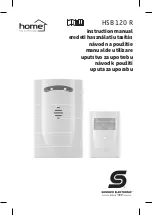
Refrigerant
05.06.2015
37 / 80
Copyright
2013 by: WATERKOTTE GmbH. Subject to changes.
9
Refrigerant
9.1
Requirements on handling of R410A refrigerant
Ensure that work on air conditioning equipment is only performed by quali-
fied persons. Qualified persons are those who can show that they have
completed technical or vocational training in connection with an approved
advanced training course, according to the Ozone Layer Regulation. Com-
pleted training or completed studies of air conditioning systems or air con-
ditioning technology is also considered proof of qualification. Ensure that in-
spections on refrigeration equipment, which require contact with the refrig-
eration circuit, are only performed by trained operating personnel. Instruc-
tions must be provided by qualified persons (these regulations can vary
within the EC, hence follow the laws and regulations of the respective coun-
try).
9.2
Safety information on handling of refrigerant
In addition, the following safety information must be followed:
Always wear protective goggles and protective gloves!
At normal atmospheric pressure and ambient temperatures, liquid re-
frigerant evaporates so rapidly that it may cause tissue freezing (risk of
going blind) in case of skin or eye contact.
Should the refrigerant contact the skin, flush the affected area repeat-
edly with plenty of cold water. Do not rub the eyes! Visit a doctor im-
mediately!
Ensure proper ventilation of workplace when working on refrigerant cir-
cuit. Inhaling high concentrations of gaseous refrigerants may cause
dizziness and suffocation sensations.
Never perform work on refrigerant circuits in work pits. The gaseous re-
frigerant is heavier than air. Thus, a high concentration could accumu-
late in the pit.
Do not smoke! Burning cigarettes can cause the refrigerant to decom-
pose into toxic substances.
Keep refrigerant away from open flames or hot metal. Poisonous gases
could be released.
Never vent refrigerants into the atmosphere. As soon as you open the
refrigerant container or the air conditioning system, the content es-
capes at high pressure. Pressure level depends on temperature. The
higher the temperature, the higher the pressure.
Avoid exposure of system components to heat. Otherwise, drain unit
first.
When removing the service hoses, do not point connections toward
yourself. Residual refrigerant could escape.
Never change factory setting of adjustment screw on expansion valve.
















































